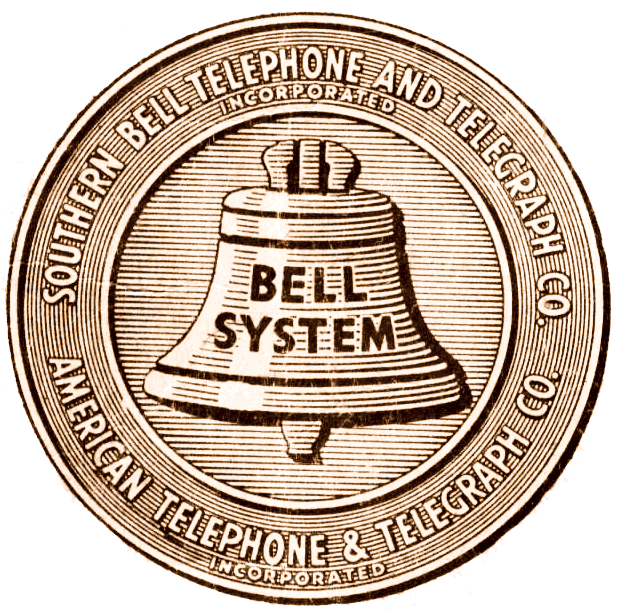I wanted to share this opinion on Hackaday about a topic that is the usefulness of a something that has become ubiquitous relatively fast.
This techonolgyy has a lot of potential, what do you think?
I’m in my 40s and therefore generally in the “get off my lawn, kids” age.
But I totally agree with that article. I’ve converted quite a few legacy devices with barrel jack to USB-C - and got rid of a huge box of junky old power bricks. Especially for devices I only use occasionally I don’t want to search for the matching power bricks - I just want to plug it into one of the 4 USB-C PD sockets I have installed into my desk.
How difficult is it to retrofit that into older devices? Because I’d love to get rid of my.“Miscellaneous Power Cords/Adapters” box on my storage shelf.
If you can solder and heat shrink then search for “usb c trigger board” on ebay and get some for like $5. They will request either 5v, 9v, 12v, 15v or 20v. I’ve found for most older battery powered barrel jack devices a voltage that is an little under spec works just fine. Ive convertered everything in my house and now own a nice USB PD battery bank, life is good.
It mainly depends on the space available in the case of whatever you want to convert. If there’s a lot of space you just get a larger USB-C PD converter board with nice soldering points for the cables. The less space available the smaller the module you need to get, up to worst case trying to do your own.
pretty easy, if soldering is easy:
(first result from amazon, not endorsement: https://www.amazon.com/Type-C-Trigger-Module-Supports-Output/dp/B08LDJBN8P)
What are some of these devices?
Older notebooks, battery chargers, PMR radios, pretty much everything taking less than 100W DC current.
deleted by creator
Oh yeah! I’m dumb! I totally get it. Anytime I buy tech I make sure it’s usb-c if it’s not, then I’m not buying it.
The only non-usbc device left is my wife’s iPhone 13 and a Bluetooth speaker we hardly use.
Have you ever used one of those 9-in-1 usb-c hubs? They blow my mind, how can so much io be handled by that one connection?
I use one of those hubs and it’s enough to charge my laptop.
Simple answer is that higher voltage is easier to deal with than higher current. USB originally ran it 5V, which would take 12A of current to provide 60W. The wire would be 14AWG, which is 1.63mm thick. Conversely, if you increase the voltage to 20V (as USB-PD can do), you now only need 3A, and the wire can be much thinner/cheaper.
The wire doesn’t care about voltage for the most part. The insulation around it needs to be thick enough to keep it from shorting to other wires and stuff around it, but it doesn’t take much insulation to be rated for 300V; way more than we need here.
Meh. I hate it.
I think society should be moving towards buildings having a dedicated DC source.
International Standardize on a DC wall plug.Each device can step it down easily/efficiently with little electronics to their own needs.
That’s pretty much the “we should all put PoE everywhere” debate, and I don’t think that’ll happen (or is a good idea) - and that’s coming from me as someone with switches providing 1.5kW of PoE power budget in the garage.
The alternative would be a shared conductor like we have now - and while that is working will in data centres doing a conductor in the required dimensions for that would be too big, and potentially dangerous, so that’ll happen even less.
No, it’s got nothing to do with power over ethernet.
It’s simply having only one high power rectifier at the breaker box.
And removing all those rectifiers from every device in the house.
We don’t need AC in the home anymore. Every device is now using DC, and any other device will still work with DC.
The only thing really left are motors, but even those are going brushless and we can chop half of the inverter out of the equation of those as well.And every device won’t even need smart electronics for PD either.
It would also solve the North America 60Hz and EU 50Hz issue, where the AC coming in doesn’t matter. We all standardize on a DC output.
And when people want to add alternative power (Solar/Wind/etc), it’s a HELL of a lot easier to just push the DC into the existing system without having to worry about frequency matching.
deleted by creator
It was once upon a time, in the age of olde, where switched-mode power supplies were not the norm and GaN semiconductors weren’t in the process of taking over the whole power IC market. Taking in any mains voltage/frequency and spitting out any reasonable DC voltage is no issue for those things, they simply don’t care.
It’s still going to be an issue in the future but pretty much only for resistive heaters (well, at least the voltage part) and motors with oomph.
Speaking of DC though: The EU is looking into applying HVDC not just to point-to-point connections but at a network level. Don’t expect that to hit your home in your lifetime, but if you’re an aluminium smelter it would make a lot of sense to have a direct connection to tons of DC.
again, simpler and cheaper electronics for everything
deleted by creator
powerful DC-DC
No, are you not aware how these work?
A step down DC-DC is nothing compared to a transformer rectifier or PD electronics with communication with a USB-C.
We don’t need AC in the home anymore.
I laughed and wrote out a list of things in my house using AC but I see you’re talking more theoretically. Most of the things using ac in my house are only ever plugged into one circuit, so we could leave those circuits alone. I don’t think USB C PD could handle a hairdryer though, and they aren’t always used on the same circuits (eg sometimes bathroom, sometimes bedroom)
It’s really tough to displace entrenched standards.
Lots of small kitchen appliances would be out of luck. Or how about vacuum cleaners as an example that needs a lot of power but might be plugged in for every room …. Where would I recharge batteries for my lawn care equipment?
What?
Most vaccums are brushless, where they are already converting the AC to DC internally. Your vacuums would be cheaper.
Where would I recharge batteries for my lawn care equipment?
again what? The same way? Your charger is converting AC to DC. You could skip that step.
All of these appliances would work better/cheaper with a 110VDC@15A source.
Yeah I think many of us missed that you’re proposing a full power replacement circuit, rather than USB power everywhere
One of the things you’re missing about USB and would likely lose here is that it’s “smart”. Both sides negotiate an acceptable power profile. If you only have one converter for the house I don’t think you could easily deliver many different power profiles to many points
_ I don’t think USB C PD could handle a hairdryer though_
Of course it wouldn’t. The idea would be get rid of USB-C and PD completely.
You’d have 110VDC@15A available for your hairdryer. Heating coils don’t care if it’s AC or DC, and the blower fan would be a brushless fan.
You’re compressors for AC or fridge would be freq drives, which are cheaper because they could drop the rectifier circuit, and highly efficient.
The only real concern about having DC in the home as standard is the safety aspect of DC doesn’t let go if you get shocked.
But that is already being worked on in general as many homes have high-voltage DC circuits from solar panels.
But different devices need different voltages. Does every outlet in my house have to have its own connection to the central rectifier? It’s a lot of re wiring.
PWM DC to DC dropping voltage to what you need is easy/cheep.
So instead of a big transformer + rectifier that each device has now, it would be a much smaller/cheaper step down at like 99.8% efficiency
We did. It’s called USB-C and my house has outlets with AC/USB-C combo.
You want another standard?
PoE would be that standard, since it’s 48V already and can run all over the house. However, we don’t actually save anything in terms of efficiency by having everything be DC.
More importantly, standards do change. Many of us did the same with USB-A, now a few years later we can update to USB-C by replacing outlets cheaply.
Can you imagine having to replace both the outlets for a new connector and a house-sized converter for new power profiles? So expensive and likely turns a simple DIY project into calling an electrician
The problem is that nothing wants the same DC voltage. It wants 3.3V, or 5V, or 12V, or 48V, or 18.7V, or whatever. You end up with layers of conversion and save nothing in the end.
Let’s say you start with solar photovoltaic panels, a DC source. It feeds into a DC-DC inverter that puts out a steady 48V. Existing DC-AC microinverters can get 95% efficiency, and DC-DC conversion can be around the same.
In an AC system, we convert to DC at point of use (be it through a wall wort, a floor wort, a USB power port integrated into traditional AC plugs, or something else). This conversion can likewise be around 95% efficient.
In a DC system, we still have to do a DC-DC conversion to get the voltage you actually want at point of use. This is around 95% efficient, as well.
In the end, we stack the same number of conversions at around 95% efficiency no matter if we run AC or DC. Except that assumes we’re coming from a DC source in the first place, like solar photovoltaic. If we come from an AC source, like wind or hydro or pretty much anything besides a solar panel, then we only have transformer losses of converting the higher line AC voltage to what your house uses. Those aren’t 95% efficient; they’re closer to 98% efficient, so we’re better off.
Not only that, but we would still prefer AC for basically anything with a high draw motor, like air con or refrigerators. Now we’re doing DC-AC conversion, and that’s closer to 85% efficient. These are some of the highest draw items in a house–and they’re going to be used more as heat pumps for HVAC, water heaters, and clothes dryers become more common–so that drop in efficiency hits that much harder.
So DC home power sounds like a good idea until you break down how conversion efficiency hits things in practice. If we’re just going to get to the same place, why bother ripping out our current system?
That said, I would like to see PoE get used for residential more. There’s lots of devices that can run off 48V and can also use networking (like smart LED lights). Why not put it over the same plug and skip having to put those devices on a wireless network? Also, you don’t need a licensed electrician to run it. You can’t be an idiot about how to run and terminate it, but you don’t need a license. This would likely be alongside our existing AC wiring, though.
_ It wants 3.3V, or 5V, or 12V, or 48V, or 18.7V,
Exactly
That’s why if you had a 110VDC supply at the wall, you do a simple PWM step-down to the required voltage in every device.
LOADS cheaper/efficient than any USB-C PD circuit…
Saves on transformers, saves on dozens of USB PD wall outlets, saves on communication needed to communicate the PD required between each device and every USB PD wall outlet.
Much cheaper. More efficient.
If only the wall was 100VDC instead of AC
Why would 100VDC help over AC? You lose very little by rectifying AC.
And again, these aren’t the high draw items in the house. Stuff with motors are, like air con and refrigerators. Those are better left on AC. Why bother when the gains are small?
Stuff with motors are, like air con and refrigerators. Those are better left on AC.
No. Trend is they are all showing up with frequency drives. Of which those inverters are rectifying to DC before making their own AC.
Efficiency gains are massive of a frequency drive , hence why they are doing it.
Would be even better if they could drop the first rectifying circuit and just use the inverter portion only.You lose very little by rectifying AC
You lose a lot actually in all the small cheap rectifiers that are in every device in the house.
Where a single purpose designed FET rectifier that is built for efficiency at the breaker would be drastically better.
In general, you don’t want DC or Ethernet cabling directly next to AC wiring. I forget the exact rules and distances, but you definitely don’t want them in the same conduit at least. Shielding only helps so much. Just a general note as you probably didn’t mean it quite so literally…
I do like PoE though! I have a server rack that powers a bunch of RPi 4s through a PoE+ switch. Had to make sure there was plenty of headroom as RPi 4s can pull just a wee bit of current under full load. I am just happy it works at all.
It’s running parallel to AC wiring. It’s usually not a big deal in practice, except for higher draw cable.
Your right. I was thinking about my job that runs 480VAC. Either way, testing for interference and noise when you run into issues can go a long way. I am just glad that, to my knowledge, CAT 7 is one standard with everything shielded. CAT 6 had so many variations and most packaging and online portals would not even tell you which ones they were using in the first place. Almost as bad as USB-C connectors.I gave up and ordered some short CAT 7 patch cables for the server so I wouldn’t stress over it. Ended up being a little cheaper than a lot of the cat 6 sets too.
AC steps up or down easily and efficiently, DC not so much.
No, AC requires large heavy transformers and then rectifying.
DC dropping down to a lower DC is way easier and more efficient.
Wasn’t that a recommendation for LED 10 years ago already?
Yeah, but frequency drives/inverters were still pretty pricy things back then to for high powered motors for compressors/blowers/etc.
But the cost and efficiency of those things have dropped SIGNIFICANTLY in the past decade…
Some AI written post’s language really sucks, and this is one of them.
I honestly don’t know how to take this 🤔
It’s very difficult to quote Douglas Adams without sounding like you’re pandering to nerd culture. I don’t think AI could pull it off.
I don’t know what to think of someone who could blast off accusations like this, either.
Edit: Oh. The accusation is even dumber. It’s just the header OP wrote. That was just direct to the point writing. AI or no, who cares about two tiny paragraphs.
Edit: Filled in the words my brain thought were there for everybody.
Just your normal redditor who didn’t create anything trying to feel superior by dismissing someone else’s effort. Don’t overthink it.
Thank you. Also I could have written it better. Reading what I wrote again I wasn’t happy at all. It really sounded a bit fake…
you wrote it? Cool!
I’ve really been loving USB PD, and retrofit into several devices i use. My big next interest is the USB PPS, allowing devices to request extermly minute adjustments to the voltage, instead of just “9v”
No, I only wrote the intro of this Lemmy thread. It’s the part that @rusticus@lemm.ee said was AI generated. At least that was my understanding.
I really hope that the hackaday article cannot be confused with ai generated garbage… Or maybe my taste is really bad!
A question because I don’t really understand:
Does those “really minute” voltage adjustments really matter for the vast majority of things you can use USB PPS for? I’m sure there are some devices out there that do, but I would think most don’t care too much if the power is 9VDC or even 6VDC or 12VDC for brief periods. Perhaps the slightly increased lifespan might matter or not.
Yea, i do think it will help, primarily with battery charging.
Right now, in order to protect the battery, the phone will request 9v, then step it down as the battery charges, and send a reduced voltage to the battery, so over time the battery might see 9v… 8.95vm 8.9v, 8.85v…
This allows the step down to happen at the charger, instead of in the phone, increasing efficiency, and reducing heat in the phone.
I think there might be an issue with the propensity of people to use random chargers. If it fits, it has to be OK right? I’m not sure one should trust the charger to step down the voltage as it charges a device. Lots of poorly designed aftermarket chargers out there and you won’t be able to make the bad ones all disappear overnight. The device needs to protect itself from the stupidity of the user.
Definitely get what you are saying, but I already trust the charger to take 120-240v AC to 5-48v DC.
Going from 9.0 to 8.85v is a much smaller regulation
am i humanb?updoots 🤙
AI can spell technology.
Also the de-jure standard in the EU
TIL de jure. At first I thought this was a typo of du jour.
De jure, de facto. Useful terms
So is du jour to be fair
It is, it’s just not a pair like de jure, de facto
de jure /dĭ joo͝r′ē, dā yoo͝r′ā/ adverb & adjective According to law; by right. noun By right; according to law. See de facto. adjective By right, in accordance with the law, legally.
I wish PoE would get more love. Networking and power in one package. Voltage is high enough that you can run it around your house without too much power loss, but not so high that you are supposed to have a licensed electrician do it. The equipment for it is getting cheaper. It’s easily powerful enough to run smart LED lights without wireless network nonsense. Plus, you can give your PoE switch its own dedicated UPS, and now your lights are all on battery backup.
It was born for a corporate IT environment for running VoIP phones and security cameras, and mostly ignored for residential customers. Good news is that used 48 port switches with full PoE are cheap on eBay.
I love PoE, but there are some hard limitations to that idea. Mainly cost per meter of cable, but also in the amount of runs that would need to be completed to accomplish that. I cant splice two ethernet cables together and run one to a nearby light or other device without a switch, which means more equipment or more cable to make it work. Also, being 48v, it will have a lower overall efficiency compared to direct wiring with 110-220v, especially with the higher resistance of ethernet vs 14ga romex. That being said, I’d love to see 48v dc in home outlets.
310m poe cat5 won’t be more as sixty bucks will it?
For CCA.
If you give me a couple pennys, a tootsie roll, and 24 hours, I could shit out a better cable for you.
Can I videotape that?
The cost has shot up and down post COVID. Cat6 is typically the better option as it uses thicker conductors. Cat6 is 23ga iirc. I paid $85 for 1000ft on my last project
I’d buy for that price :)
Oh boy do I have something for you. The single pair ethernet standards. Connect 8 devices on the same line as a bus.
That would only allow PoE+, which limits devices to 25.5W. Speed would be limited to 100Mbps. Still enough for lights, though.
Didn’t realize that was part of the spec. But wouldn’t that be 4 devices? 2 wires per device for tx/rx and power +/-.
No. It’s a single twisted pair wire to connect at least 8 devices over a minimum distance of 25m. However the speed is only 10MBit. The spec is called base10-t1s
If we’re talking about hiring someone to run AC wires, then the cost of extra equipment can be offset by the labor costs.
(I have definitely hired a master electrician for every outlet added to my house. Definitely.)
PoE is terrible. I threw mine away and went to 802.11ac wireless and it was 10x faster. The problem is the circuit breakers, washing machines, or anything that generates EMI screw with the quality. Ethernet>wifi>PoE, at least for most use cases.
I think you are confusing PoE (Power over Ethernet) with EoP (Ethernet over Power).
PoE: is an ethernet technology that uses the ethernet cabling to power small devices like APs, phones, cameras, etc. while providing an ethernet connection.
EoP: is using a pair (or more) of devices that plug into power outlets which you then connect ethernet cables to. This “extends” the ethernet cabling over the power cables in your house.
Yes, I got them mixed up. It’s EoP that I was referring to.
Are you talking about the adapters that let you run network through your electrical circuits? Because that’s different from PoE. PoE is running power through the network cables so you get power and network with one plug, so kind of the opposite of that.
I can confirm that using electrical infrastructure for network is really not great.
Ah yes, that is what I was thinking of, thought that was the same thing since it was power and Ethernet together.
I generally like USB-PD, as you can generally plug in any PD compliant device into any PD compliant charger and it will charge. The connector doesn’t even matter, PD works over Lightning and for example MagSafe as well.
What I found to be lacking are these multi-port charging bricks. They do a solid job at charging battery-powered devices, but most of them renegotiate the power contract with every connected device when you plug another one in or remove one. I tried multiple chargers by Anker, Ugreen and Belkin and they all do that. Apparently Apple’s dual 35 watts USB-C charger doesn’t, but manages to renegotiate without a momentary disconnect. It’s only 35 watts though, so it’s not practical for many use cases.
Is there any disadvantage to this renegotiation? As far as I know, it happens to make sure the charging block doesnt burn your house down.
The biggest problem is that devices that aren’t battery powered will reboot.
Ideally you would have each port on its own isolated bus.
I suspect a most people call power bricks “chargers” and forget there are non-battery-powered devices that they can power.
USB-PD can be used for more than just charging. If you’re running something (a headphone amp for example) from one port of a multi-port brick, you don’t want it to stop momentarily every time you plug or unplug one of the other ports.
Yes, if the device isn’t battery powered. Think one-board computers or also docks (for example Steam Deck Dock). The Deck doesn’t turn off, but the dock switches to being powered by the Steam Deck momentarily, which resets its ports as well (display and network disconnects briefly).
deleted by creator
Maybe the Pine-power would work for you?
I believe that’s because the power needs to be shared between the ports. They normally have a maximum combined output that gets split between devices based on what charging speed they support.
Yes, but apparently you can renegotiate without briefly disconnecting, as that’s what the Apple charger apparently does. Not sure how this works on a technical level, but all multiport chargers should do that. Most don’t.
I carry around a two port 110w GaN charger for the laptops. Fast charges everything else.
Which model is it?
Anker something. It’s fucking dope.
I’ve modified a few devices to charge or be powered with USB C. I’ve also modified devices with USB C That didn’t work correctly because they were missing the pull down resistors on the CC lines.
Let’s not talk about the new Raspberry Pi…
Plus the Pi Pico is micro USB. I hate them for making that choice.
why not?
It doesn’t support PD, and uses an improperly wired USB-C connector.
Do you have any source on that? I planned to get one soon and that’s worrying. So far I’ve found this post after a quick search, which claims PD is supported.
Maybe he’s talking about the pi 4, which did have usb-c power issues on its first revision. https://bgr.com/tech/raspberry-pi-4-usb-c-charging-issue-how-to-fix-the-power-problem
Current pi4’s and all pi5’s don’t have that problem.
The Pi 5 wants 5A and 5V, which I believe [citation needed] isn’t supported by USB-PD:
This article about usb-pd lists 5v 5A as an available option https://www.howtogeek.com/769888/what-is-usb-power-delivery-usb-pd/
USB PD never exceeds 5A of current, but the voltage can be dynamically configured to meet the needs of a device up to the maximum power limit for the standard.
And
When a USB PD charger connects to a device, it performs a “handshake” asking the device how much power it needs. USB PD supports seven voltage levels at 5V, 9V, 15V, 20V, 28V, 36V, and 48V.
yea, i really rolled my eyes when i saw it was 5v at 5 amps. Seriouly, give us a more sane connection!
The power situation on RPi has been shit since at least the 3B. I have plenty of powerful enough brand name USB power adapters that give low voltage warnings but work perfectly fine if you ignore it. It is way too sensitive.
I hope there will be a more robust connector option some day. But this situation already beats most of the alternatives and especially the tangled mess of incompatible cables and power supplies.
And with a bit of smarts, it can even work in two directions, charging one device off the battery of another.
I have a love/hate relationship with USB. The form factor of USB-C is fine, that’d be great to standardize it, but mechanically I prefer Apple’s lightning connector.
After multiple projects I’ve worked on that involved wiring up devices to use USB in ways other than the creator of USB intended, USB can fuck right off. I watched a video on how to properly wire up a shielded cable and the guy said that the creator of USB had no idea of how electricity flows through devices and now I agree.
Edit: I’m curious why I’m getting downvoted.
I think the entire design was based on working around Apple’s patents.
Citation please? Apple was part of the USB-C Specification Working Group. Despite their obsession with the Lightning connector, they were also the ones who made USB-C-only laptops.
Apple invented lightning long before USB c. Being on the working group would help the committee not accidentally infringe on Apple patents.
Otherwise Apple would have given up hundreds of millions of license fees for the past 5 years where USB c and lightning have coexisted.
Seriously?! God damnit. Fuck Apple.
It was until Raspberry Pi fucked it up by calling 5V5A “USB PD”.
I had to order a charger from another country since the model for our country has been out of stock for months.
For mobile phones it’s a good standard, but mfgs are putting them on desktop computers and laptop power plugs as primary power. That’s just dumb, these things are all going to fail in 10 years of regular use where USB-A could easily hold up mechanically for 50. But it’s suppose to be a data connector only. Combining things only makes devices less repairable. Broken USB-C jack? Well, better toss the laptop.
USB-A is only rated for 1,500 mating cycles, whereas USB-C is supposed to last for 10,000… Though in reality the ports on my phones seem to start getting too loose to hold the jack in at around 1,000 cycles. Still, it’s not a totally unreasonable standard, and any device that hasn’t been designed to be thrown away should have ports broken out onto replaceable subassemblies – as is the case with many business-class laptops, for instance – so replacing a failed USB-PD port shouldn’t be too much trouble.
For phones I’ve found the issue is lint/dust getting in the port and clearing that out makes the port work like new again.
I’ve never seen a spare barrel jack on a laptop but a lot of laptops allow charging on multiple USBc ports. For full fat desktops though it’s basically a non starter. I think it’ll really shine when it comes to small electronics like moderns/routers, clock radios, electric toothbrushes, children’s toys, and other little things that come with barrel jacks.
When will people learn to check for potential unsavory foreign language homophones before naming their products or technology?
“PD” in French (pronounced pédé) is a short form of the word for pedophile, and also a common derogatory term for homosexuals.
There are thousands of languages. This is a silly concern
You might wanna look up why the Mitsubishi Pajero is sold as “Montero” in Spanish speaking countries.
in Spanish speaking countries
Doesn’t the Institute Francais invent french words for new terms anyways? So isn’t it called something like “BUS DP” or something like that in french anyways? /hj
Peter File!

What hurray? USB-C and PD are both monstrosities (though of course the mini and micro USB connectors were even worse). We already had a perfectly good low power standard, regular 5 volt USB. It’s just that higher power was wanted. But we have that already too, automotive 12 volt DC, and various options after that. It’s just the mobile phone industry’s obsession with thin, tiny connectors that are causing this.
We wanted our stuff to charge faster. We can’t pull more amps through the thin USB cable wires and contacts without turning them into detonation cord, so we increase the voltage instead, and due to Ohm’s Law, we get more wattage out of it as a result, so now we can charge your phone in 20 minutes instead of 3 hours. And because some devices can take advantage of this, and some can’t, we had to build some logic into the power delivery system to avoid frying things.
Yes, you have 5 V. THen you have outomotive 12 V. But now you would have also automotive 48 V. USB-PD is one standard and can deal with different level of power requirements, from headsets up to laptops. And then you can use for other things as well, in a way that can be more practical than dealing with 110-220 V AC.
Is it a monstruosity? I don’t know honestly. I trust hackaday in that sense, and they usually praise it, without any hidden reason, I think.
Also, if you read the article, you can see that it is also a continuation of one from a few years back, before USB_PD was widespread. It touches also the points that you wrote. Give it a read:
https://hackaday.com/2016/12/21/so-wheres-my-low-voltage-dc-wall-socket/
I wouldn’t say usb pd is one standard. There is a combinatorial explosion of devices and cables with different voltage support, current capacity, presence or absence of E-mark and of Thunderbird, the famous incident where a bad cable blew up Benson Huang’s laptop, etc. If you intersect down to the universal standard in the middle, it’s just plain 5 volts like before.
And are really going to push 240W through that teeny connector and not have any melt?
And you have to pay like 5K to USB-IF to build your own implementation. Because everybody forgets that USB is proprietary.
But the madness of every vendor having it own proprietary conector is worse.
USB-C and USB PD may not be good enough, but it’s better than the previous alternative.
The whole USB-PD standard is massively over complicated and that makes it a lot harder to implement in home made equipment. You pretty much need a dedicated chip just to negotiate with the power supply. The whole protocol should have been made simple enough to implement on any 8 bit microcontroller and not be locked behind a proprietary standard.
There does need to be some way to negotiate higher voltages. There is just too much voltage drop when you need more than a couple amps at 5 volts.
It would be nice to have a standard for supplying unregulated 48V DC at 1KW or more without any negotiation or electronics required and with a robust connector that won’t break if it gets bumped. That would be very useful for off grid solar systems since the power would come directly from the batteries.
I thought solar panels used Anderson connectors pretty standardly. I wouldn’t call it low power but in electronics I wouldn’t call 100W low power either. We basically need 5v 15w for phones, 12v for bigger stuff (laptops) up to say 150W. After that, AC might be better since you can use transformers. I guess we need super high power DC for charging cars. Tesla seems to be the de facto standard. There is no reason to use that connector in a phone.
Solar panels use MC4 connectors. They are weatherproof, they lock together and they fit the thick, weatherproof cables used for solar power. They can handle fairly high voltage, but they can not be connected or disconnected under load though.
The Anderson Powerpole connectors are a good choice for DC power. I use Anderson PP30 connectors for most of my 13.8V stuff. They are robust and fairly small.
Most electronic devices will just rectify AC into DC before stepping it down with a switch mode power supply since that’s smaller, lighter, and cheaper than using a mains frequency transformer. It’s pretty rare to find a mains frequency transformer in consumer electronic equipment today.
Yeah probably true about 60 hz transformers, even for higher powered devices like desktop PC’s. They still have pretty big internal inductors though. Maybe we need to bring more 208V 3 phase into homes and offices.
For permanent installations like most solar setups, I don’t think uniformity of connectors is that important, as long as it’s non-proprietary and you can order it from a catalog.
For phones and laptops, wireless charging is probably the way forward. More than additional standardized chargers, I want standardized and swappable batteries, for phones, laptops, power tools, etc. The chargers will follow.
For phones and laptops, wireless charging is probably the way forward
Wireless charging is super lossy though and generally far slower than charging over USB. I’m sure some of that can be overcome with more research but I have a hard time believing wireless anything will ever be as efficient as wired
Phones or laptops should probably accomodate wired charging (though count on Apple to eliminate it anyway), but most of the time, wireless could be the norm. Convenient, avoids wear on connectors, etc. I think there are some Samsung phones with two-way wireless charging, so you can stack one phone on top of the other and transfer charge. That seemed crazy to me given the non-removable batteries but whatever.
That reminds me of another USB PD idiocy that I forgot to mention earlier. There are many devices like power banks and even some phones, that can both send and receive charging current. E.g. you’d charge your power bank from a wall cube, and later use the power bank to charge your phone. In the pre-USB-C era, power banks had separate connectors for input and output. Now the two functions share a single connector and the cable is the same at both ends.
So if you plug one power bank into another, how does the setup know which one is to be the “charger” and which the “chargee”? The spec says they are suppsed to choose at random! I guess you are supposed to look at the activity lights and if the current is going the wrong way, unplug and replug the devices until it goes the way you want. This can lead to a situation where you plug your phone into a power bank, but the phone ends up charging the power bank instead of the other way around.
I imagine that if you are attentive enough, you can prevent this somehow, or at least intervene and reverse it when it happens. But it still seems like crackhead engineering to me.


















